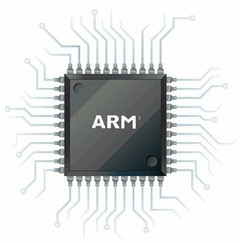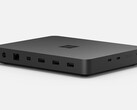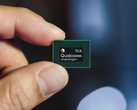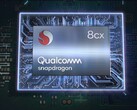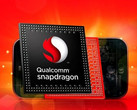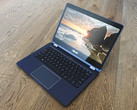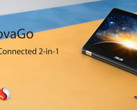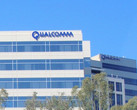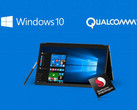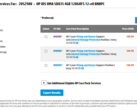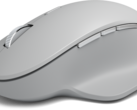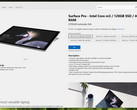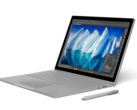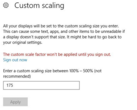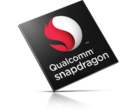Around a year ago, Microsoft announced a partnership with Qualcomm to produce a new set of devices under a concept known as “Windows on ARM.” Windows on ARM isn’t the same thing as the failed Windows RT, which ran a limited version of the operating system that ran a different set of applications than regular Windows 8.
Windows on ARM is an effort to get the full Windows 10 operating system running on ARM hardware, including running x86 applications on an emulation layer with much better performance than was capable than when Microsoft last tried ARM hardware. This is something that Intel clearly isn’t thrilled about and will likely try and use patents and other legal challenges to limit the ability of Microsoft and Qualcomm to push this technology.
While the most powerful ARM processors don’t have the same performance as modern mid to high-end x86 CPUs, they can easily compete with more entry-level components (Pentium N4200 scores 1550/4180 Geekbench single/multi-core vs. Snapdragon 835 on 1960/6660). But there is a significant advantage that ARM chips do have… years of development targeted at creating highly power efficient designs for portable computing.
There are already “hundreds” of ARM devices produced by Asus, HP, and Lenovo being tested at Microsoft's Redmond headquarters — likely running the Snapdragon 835. Pete Bernard, Principal Group Program Manager for Connectivity Partners at Microsoft, was quoted by TechSpot as saying “We set a high bar for [our developers], and we’re now beyond that. It’s the kind of battery life where I use it on a daily basis. I don’t take my charger with me. I may charge it every couple of days or so. It’s that kind of battery life.”
We very well might see multi-day battery life on these Windows on ARM devices, and that wouldn’t be out of the realm of possibility. While a convertible such as the Asus Vivobook Flip 12 would use more power to light the screen than a smartphone, it also has a vastly larger battery. As a comparison lets look at the Asus Vivobook Flip 12 (Pentium N4200) vs. the OnePlus 5 (Snapdragon 835). When at idle, the main power draw is likely to be the screen, rather than the SoC, while the main power draw during load would be the SoC:
- The Asus Vivobook Flip 12 has an idle average of 7.8 W and a load average of 21 W.
- The OnePlus 5 has an idle average of 1.44 W and a load average of 6.91 W.
- These two devices give a difference between idle and load of 13.2 W versus 5.47 W respectively.
- For comparison, the m3-7Y30 version of the Surface Pro 2017 had a difference of 13.9 W.
An ARM version of the Vivobook Flip 12 would likely have a significantly longer battery life with the same sized battery.
Qualcomm has said that device development is still on track for announcements before the end of 2017, with more details to come in the next few weeks.


 Deutsch
Deutsch English
English Español
Español Français
Français Italiano
Italiano Nederlands
Nederlands Polski
Polski Português
Português Русский
Русский Türkçe
Türkçe Svenska
Svenska Chinese
Chinese Magyar
Magyar